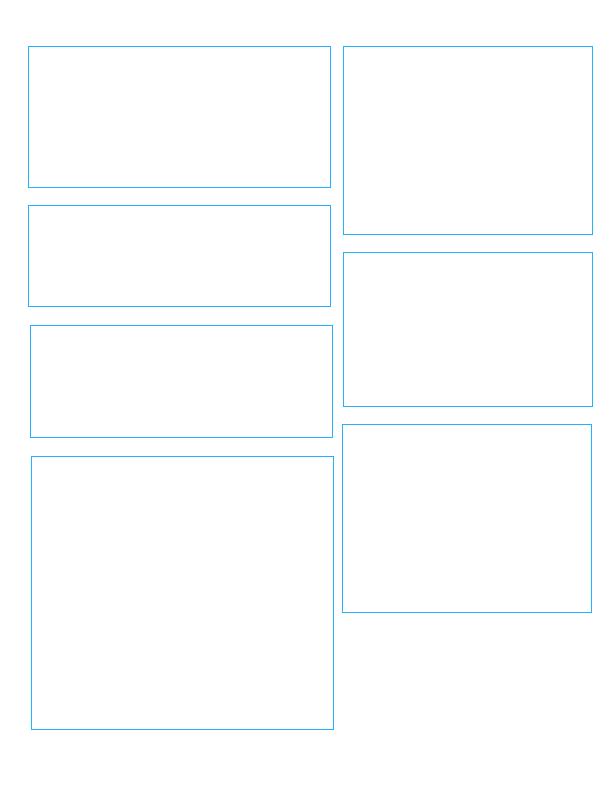
Let's be perfectly clear the goal of some of these mindfulness exercises isn't to
get rid of the anxious or uncomfortable emotions, it's simply to sit with them and
notice what they feel like. To be able to say, "Oh I'm feeling anxious right now;
that's okay, let me focus on my breath and give myself some compassion." This
is a technique you can take with you once you get back on the court as well, per-
haps simply noticing those pre-match jitters next time they come up. After all,
even Federer gets nervous! Nerves and anxiety aren't bad, what matters is how
we deal with them.
Sometimes, especially when we are feeling super anxious, the last thing we are
able to focus on is our breath. Connecting to a grounding anchor like the soles
of our feet on the ground (bonus points for getting out in the grass with your bare
feet) is an excellent option. Back on the tennis court, racquets or balls both make
great grounding anchors!
If you find yourself in a prolonged anxious cycle, you may need more than a few
minutes of breathing to break out of the funk. Even just taking a few minutes to
go outside and find a quiet spot for a short walk and get away from technology
can be amazingly beneficial. Even in this current situation of staying at home
there are things you can do. How about some home practice? Shadow swinging
in the basement or hitting against a wall? Ever thought of learning to juggle?
Mindfulness meditation is a great activity to practice now to help build resilience
for when you get back on the court! Meditation, however, can be a bit of an in-
timidating word, so where to start? I've already shared a few short exercises,
such as the three-minute breathing space and self-compassion break and, of
course, deep breathing. Even simpler than that would be to pick one activity you
already do every day and do it mindfully.
Doing an activity mindfully simply means engaging all five senses in noticing what
you are doing non-judgmentally versus being on autopilot. Good options for this
include brushing your teeth, showering, getting dressed, drinking that morning
cup of coffee or even eating a meal or snack. What does it really feel like to
shower? What sounds can you hear? What does the water taste like on your
lips? What does the water cascading down look like, etc. You get the idea. Play
with it and have fun. There is no wrong way to do this exercise; it's merely about
learning to get off autopilot since
are doing at the moment.
hand or how beneficial the art of mindfulness could be in your or your student's
next match.
It's easy to lose perspective, to get sucked into a negative cycle
and dwell on the things we can't do. This has been a big one for
me. Just two years ago, the path I was on did not include daily
stretching or meditation. If it hadn't been for chronic pain and in-
jury issues, I wouldn't have started on a healing journey. I
wouldn't have developed a passion for mindfulness and holistic
health and I definitely would not be sitting here writing this article
about resilience and connection in uncertain times. To go back
even further, if at age 16 I hadn't had hip surgery that derailed my
competitive tennis career, I most likely wouldn't have connected
with so many people I met on and off the tennis court. Never have
silver linings and a positive perspective been more relevant than
now.
Tying in with finding perspective is gratitude. Neuroscience has
shown us that gratitude rewires our brain, transforming it into a
valuable coping mechanism. Of course, this can be easier said
than done, especially if you are in state of severe pain, either
physical or emotional. It is helpful to start out in small increments,
for instance, adding an informal meditation upon waking or before
going to bed writing down three things you are grateful for right
now. It could be as simple as gratitude for a comfy bed, a cup of
tea, or a hot shower. Note: Studies also show us the power of
writing something down vs. just thinking about it.
Now with all that said on gratitude and finding silver linings, it
does not mean we have to be `positive' all the time. It's okay not
to be okay. The so-called `negative' emotions of sadness and
anger and fear are a fact of life; without them the positive emo-
tions of joy and peace and courage could not exist. The trick is
to embrace and feel all emotions without letting them overwhelm
you completely or pushing them aside. How? By simply showing
yourself some self-compassion and kindness, just like you would
a dear friend. What do you need right now to soothe yourself in
a healthy way? Maybe it's the self-compassion break you tried
earlier or a hot bubble bath or an exquisite piece of dark choco-
late or curling up with a good book or watching an entertaining
show.
tournaments and events and coaching, but in the meantime, what
a great opportunity to focus on things we may not always make
the time for or to develop better habits. Coaches, this is a chance
for you to stay connected with your students and lead by example.
we have a choice to get lost in a sea of fear and panic or to see
it as an opportunity for growth and self-reflection, to learn to surf
the waves, to find connection in creative ways, to remember how
connected we all truly are. Stay safe and be well.